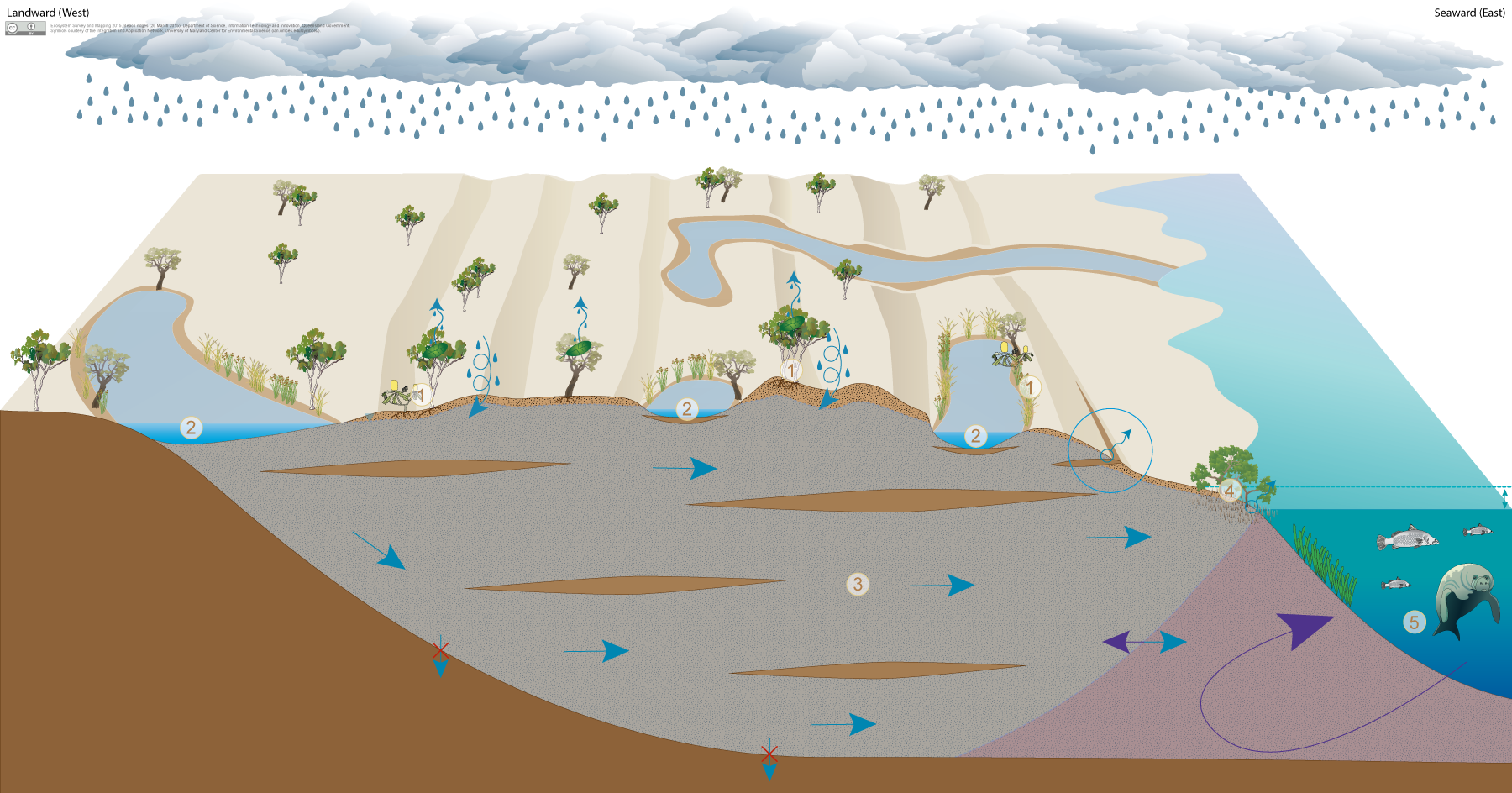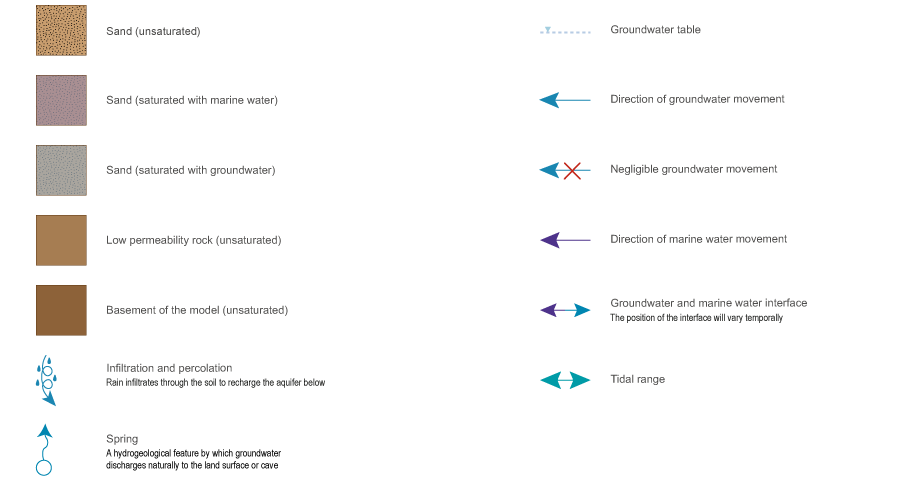|
|
Coastal sand masses (beach ridges)Coastal sand masses (beach ridges)Beach ridges Click on elements of the model or select from the tabs below Beach ridges have developed along the Queensland coastline. They are largely comprised of coastal sands and typically support a single, unconsolidated sedimentary aquifer, where groundwater forms a freshwater lens in the intergranular voids of the coastal sand mass. Perched aquifers may also occur over low permeability layers within the sand mass. Unconsolidated sedimentary aquifers in sand masses may provide a wide range of ecosystems with water required to support their fauna and flora communities, ecological processes and delivery of ecosystem services.
Pictorial conceptual model PDF Additional linksLast updated: 18 December 2015 This page should be cited as: Queensland Government, Queensland (2015) Coastal sand masses (beach ridges), WetlandInfo website, accessed 18 March 2024. Available at: https://wetlandinfo.des.qld.gov.au/wetlands/ecology/aquatic-ecosystems-natural/groundwater-dependent/coastal-sand-mass-beach-ridges/ |

 — Department of Environment, Science and Innovation
— Department of Environment, Science and Innovation







